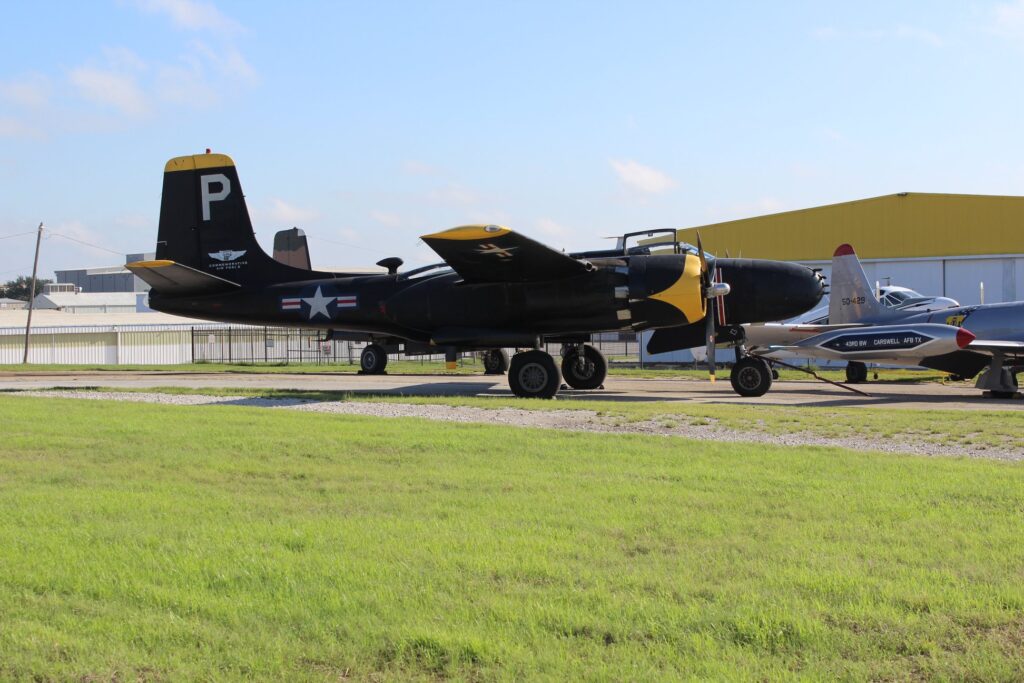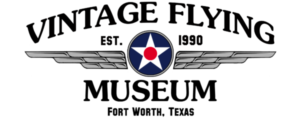
The Douglas A-26 Invader (B-26 between 1948–1965) was a United States twin-engined light attack bomber built by the Douglas Aircraft Co. during World War II that also saw service in Korea, Vietnam, the Bay of Pigs, and several other conflicts. A limited number of highly modified aircraft (B-26K/A-26A) served in combat until 1969. The redesignation of the type from A-26 to B-26 has led to popular confusion with the Martin B-26. Although both types used the R-2800 engine, they are completely different designs. The last A-26 in active US service was assigned to the Air National Guard; that aircraft was retired from military service in 1972 by the US Air Force and the National Guard Bureau and donated to the National Air and Space Museum. The A-26 was originally built in two different configurations. The A-26B had a “solid” nose, which originally could be equipped with a combination of anything from .50 caliber machine guns, 37mm auto cannon, 20mm or even a 75mm pack howitzer, but normally the solid nose version housed six (or later eight) .50 caliber machine guns, officially termed the “all-purpose nose”, later commonly known as the “six-gun nose” or “eight-gun nose”. The A-26C’s “glass” nose, officially termed the “Bombardier nose”, contained a Norden bombsight for medium altitude precision bombing. The A-26C nose section included two fixed M-2 guns, later replaced by underwing gun packs or internal guns in the wings. After about 1,570 production aircraft, three guns were installed in each wing, coinciding with the introduction of the “eight-gun nose” for A-26Bs, giving some configurations as many as 14 .50 in (12.7 mm) machine guns in a fixed forward mount. An A-26C nose section could be exchanged for an A-26B nose section, or vice versa, in a few man-hours, thus physically (and officially) changing the designation and operational role. The “flat-topped” canopy was changed in late 1944 after about 820 production aircraft, to a clamshell style with greatly improved visibility.
A-26B S/N 43-7140 “Texas Special”
Military Service:
- January 4, 1945 to November 13, 1945
- 127th Base Unit at Florence S.C.
- November 13, 1945 to September 1948
- 4160th Base Unit Air Material Command Hobbs Field N.M.
- September 1948 to March 13, 1950
- 4127th Base Unit Air Material Command McLellan AFB. CA
- March 13, 1950
- Stricken from USAF inventory, sold on civilian market
Civilian Service:
- March 13, 1950 to January 1952
- Storage
- January 1952
- Alex Oser, a scrap dealer bought it and 13 other A-26‘s
- March 19, 1952
- Sold to Texas Railway Equipment Co. of Houston
- April 1953
- Converted to executive transport by Grand Central Aircraft Co.Glendale, CA
- Completely disassembled and all systems inspected, repaired or overhauled.
- December 30, 1961
- Purchased by Barnwell Drilling Company Shreveport, LA
- It is said that former Presidents Lyndon B. Johnson had flown on the aircraft as well as Jack Kennedy during this time.
- February 7, 1967
- John Barnwell traded 43-7140 for a larger Convair 240
- April 19, 1967
- Flight Test Research, Inc. Long Beach, CA purchased for $15,000.00.
- 43-7140 went home to where it was built 25 years earlier.
- 1972 to 1977
- Ownership history and uses are a little sketchy, but they must have been interesting since the aircraft was seized from drug-runners by T.L. Baker of the Potter Co. Sheriffs Dept in Amarillo on January 10, 1977. This occurred after a pilot had landed the aircraft on one engine and walked away from the airplane. This clearly made the authorities suspicious. A testament to this story is that at a particular air show a few years later, two gentlemen in dark sunglasses seemed rather intrigued by the airplane; finally one of the gentlemen approached a crew member and asked what color the aircraft had been before Ranger Wing acquired it. When told it was white with grey trim he exclaimed, “My God it’s the “Grey Ghost! We chased that sucker up and down the Gulf Coast! Never could catch him. He’d drop down on the deck and throttle the engines up and leave us standing there!“. The two gentlemen were DEA agents.
- December 21, 1977
- Purchased by the Commemorative Air Force from Amarillo Sheriffs Dept.
- August of 1982
- Initial restoration by the CAF Ranger Wing
- Members name it the “Spirit of Waco“
- September 2009
- 43-7140 is re-assigned to CAF HQ Midland Texas
- January 2010
- CAF HQ assigns A-26B 43-7140 to the Invader Squadron
- January 2012
- 43-7140 finally arrives at it’s new home with the Invader Squadron
- Based at the Vintage Flying Museum
General characteristics:
- Crew: 3
- Pilot
- Navigator/Bombardier
- Gunner
- Length: 50 ft. 0 in. (15.24 m)
- Wingspan: 70 ft. 0 in. (21.34 m)
- Height: 18 ft 3 in (5.64 m)
- Empty weight: 22,850 lbs (10,385 kg)
- Loaded weight: 27,600 lbs (12,519 kg)
- Powerplant:
- 2x PW R2800-27 “Double Wasp”
- Radial Engines @ 2000 hp each
Performance:
- Maximum speed: 365 mph (308 kts, 570 km/h)
- Range: 1400 mi (1200 nmi, 2, 300 km)
- Service ceiling: 22,000 ft (6,700 m)
Armament:
- Guns:
- Up to 8 .50 cal. (12.7 mm) M2 Browning machine guns in the nose
- 8x. 50 cal. (12.7 mm) M2 machine guns paired in four optional under-wing pods
- 2x .50 cal. (12.7 mm) M2 machine guns in remote-controlled dorsal turret
- 2x .50 cal. (12.7 mm) M2 machine guns in remote-controlled ventral turret
- Bombs:
- 6,000 lb (2,700 kg) capacity
- 4,000 lb (1,800 kg) internal bomb bay
- 2,000 lb (910 kg) externally on the wings
